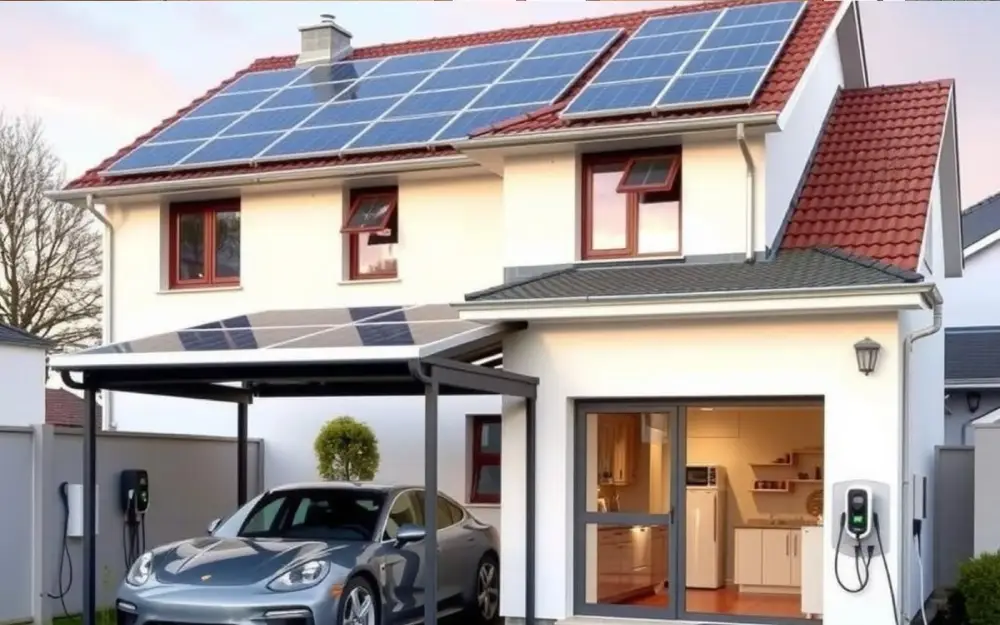
How to Make Your Home More Energy-Efficient: A Guide to Saving Money and the Planet
In today's world, energy efficiency isn't just about reducing your utility bills—it's also about minimizing your environmental impact. By making a few smart changes to your home, you can save energy, reduce costs, and contribute to a greener planet. If you're looking to make your home more energy-efficient, here are some key strategies that can make a significant difference.
1. Upgrade to Energy-Efficient Appliances
One of the quickest ways to improve your home’s energy efficiency is to replace old appliances with newer, energy-efficient models. Look for appliances that have the ENERGY STAR label, which indicates they meet high standards for energy use. Refrigerators, washing machines, dishwashers, and even water heaters have more efficient models that use less energy while performing just as well, if not better.
2. Seal Gaps and Insulate
Drafty windows and doors are some of the most common culprits of energy loss in a home. Sealing gaps with weatherstripping or caulk can prevent warm air from escaping in the winter and cool air from leaving in the summer. Additionally, consider adding insulation to your attic, walls, and floors to keep your home temperature-regulated without over-relying on heating and cooling systems.
3. Switch to LED Lighting
Traditional incandescent light bulbs waste a lot of energy in the form of heat. By switching to LED bulbs, you can save up to 75% of the energy used by incandescent bulbs. They not only consume less electricity but also last much longer, making them a cost-effective and energy-efficient lighting choice.
4. Upgrade Your Thermostat
An old thermostat can lead to energy inefficiency, as it may not regulate temperatures accurately. Installing a programmable or smart thermostat allows you to set temperatures based on your schedule. For instance, you can lower the temperature when you’re not home or adjust the settings while you’re sleeping, ensuring that your home’s heating and cooling system isn’t working overtime.
5. Use Energy-Efficient Windows
Windows are another area where heat can escape or enter, making your home less energy-efficient. Upgrading to double-pane or energy-efficient windows can help maintain the temperature inside, reducing the need for heating or cooling. If new windows are not within your budget, consider adding window film or installing insulated curtains to reduce heat loss.
6. Go Solar
If you’re looking to make a long-term investment in energy efficiency, consider installing solar panels. Solar energy is a renewable resource that can dramatically reduce your reliance on electricity from the grid. Though there is an upfront cost to installing solar panels, they can pay for themselves over time through energy savings, and many local governments offer incentives or rebates to make the switch more affordable.
7. Maintain Your HVAC System
Regular maintenance of your heating, ventilation, and air conditioning (HVAC) system is crucial for maintaining energy efficiency. Replace air filters every 1-3 months to keep the system running smoothly and ensure optimal airflow. Additionally, scheduling annual maintenance checks can help identify issues before they lead to expensive repairs or energy wastage.
8. Limit Water Usage
Water heating accounts for a significant portion of energy use in most homes. By installing low-flow fixtures for your showerheads, faucets, and toilets, you can reduce water consumption and energy usage. Additionally, using cold water for laundry instead of hot water can also save energy. Consider upgrading to an energy-efficient water heater that uses less energy to heat water.
9. Consider a Green Roof or Roof Coating
If you’re building or renovating your home, a green roof or a reflective roof coating can reduce the heat absorbed by your home. These solutions help keep the building cooler in the summer, reducing the need for air conditioning and lowering your overall energy use.
10. Unplug Electronics When Not in Use
Many electronics consume power even when they’re turned off, often referred to as "phantom" or "standby" power. Unplugging devices like chargers, televisions, and kitchen appliances when they’re not in use can save electricity and reduce your energy bills. Alternatively, you can use a power strip and turn off multiple devices at once with one switch.
11. Optimize Your Landscaping
Strategic landscaping can also play a role in your home’s energy efficiency. Planting trees or shrubs around your home can provide shade during hot months, reducing the need for air conditioning. In colder climates, evergreen trees can act as windbreaks, helping to keep your home warmer during the winter.
Conclusion: Small Changes for Big Savings
Improving your home’s energy efficiency doesn’t require a complete overhaul. By taking a few simple steps, such as upgrading your appliances, sealing gaps, and optimizing your heating and cooling systems, you can save money and reduce your carbon footprint. Whether you’re interested in making small changes or investing in more substantial improvements like solar panels, there’s no better time than now to start making your home more energy-efficient. Start today and enjoy the long-term benefits for both your wallet and the environment!


